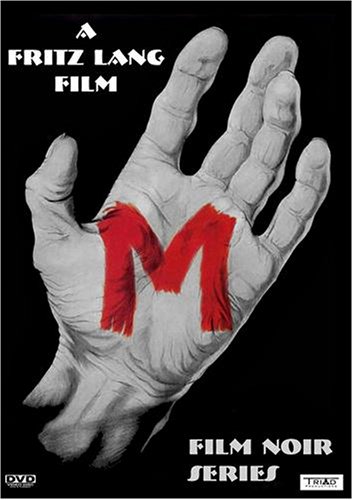All Nonfiction
- Bullying
- Books
- Academic
- Author Interviews
- Celebrity interviews
- College Articles
- College Essays
- Educator of the Year
- Heroes
- Interviews
- Memoir
- Personal Experience
- Sports
- Travel & Culture
All Opinions
- Bullying
- Current Events / Politics
- Discrimination
- Drugs / Alcohol / Smoking
- Entertainment / Celebrities
- Environment
- Love / Relationships
- Movies / Music / TV
- Pop Culture / Trends
- School / College
- Social Issues / Civics
- Spirituality / Religion
- Sports / Hobbies
All Hot Topics
- Bullying
- Community Service
- Environment
- Health
- Letters to the Editor
- Pride & Prejudice
- What Matters
- Back
Summer Guide
- Program Links
- Program Reviews
- Back
College Guide
- College Links
- College Reviews
- College Essays
- College Articles
- Back
M (1931)
The 1930's were a big time for movies. Starting with The Jazz Singer, film had evolved past the point of silent film to the new era of "talkies", which could support spoken dialogue. This new shift was a huge change for a lot of directors, one of which was Fritz Lang. Considered a technological and visual wizard, Lang was famous for silent films with incredible visuals that were revolutionary for their time. His first talkie, M, would prove to be just as revolutionary in content as it would be for visuals.
The film revolves around a panicked 1930's Berlin, as a mysterious child murderer prowls the streets with no indication of who or where the killer was. From city officials to the underground gangs of Berlin, everyone's concerned with finding and stopping this murderer, though these two groups are after him for very different reasons. Meanwhile, the killer has no idea of this race as he continues to roam the streets.
In terms of content, as I said, the film was able to input a lot of themes considered taboo at the time. Pedophilia, sexually-driven serial killers - these things were unheard of as subjects for a film. The visuals, also, are revolutionary for their dream-like quality. The style isn't exactly German expressionism, though it certainly resembles it, but it's not exactly film noir either. Instead, the film has its own, distinct look.
The performances are all great here, with Peter Lorre as the killer just being fantastic. However, I didn't like how the plot drove the characters, instead of vice-versa. Personally, it just makes the characters less impacting, which in turn makes them less interesting. Though the film's more concerned with plot than it is with characters, the script and solid performances are able to somewhat make up for it.
Speaking of complaints, I found the first act of M to be very lacking. It had good visuals, that's granted, but the entire structure of the act was just a mess. It was so uninspired, chaotic, and the pacing was just all over the place. I enjoyed some aspects of the opening, but it made delving into the film much harder than it should have been. Thankfully, the second act picks up dramatically and gives off enough steam to keep us interested until the powerful ending with Hans Beckert's (aka the killer's) powerful monologue.
While the characters' impact, plus the first act, leave something to be desired, the gracefully executed second and third acts help the good to outweigh any of the bad.
Similar Articles
JOIN THE DISCUSSION
This article has 0 comments.

